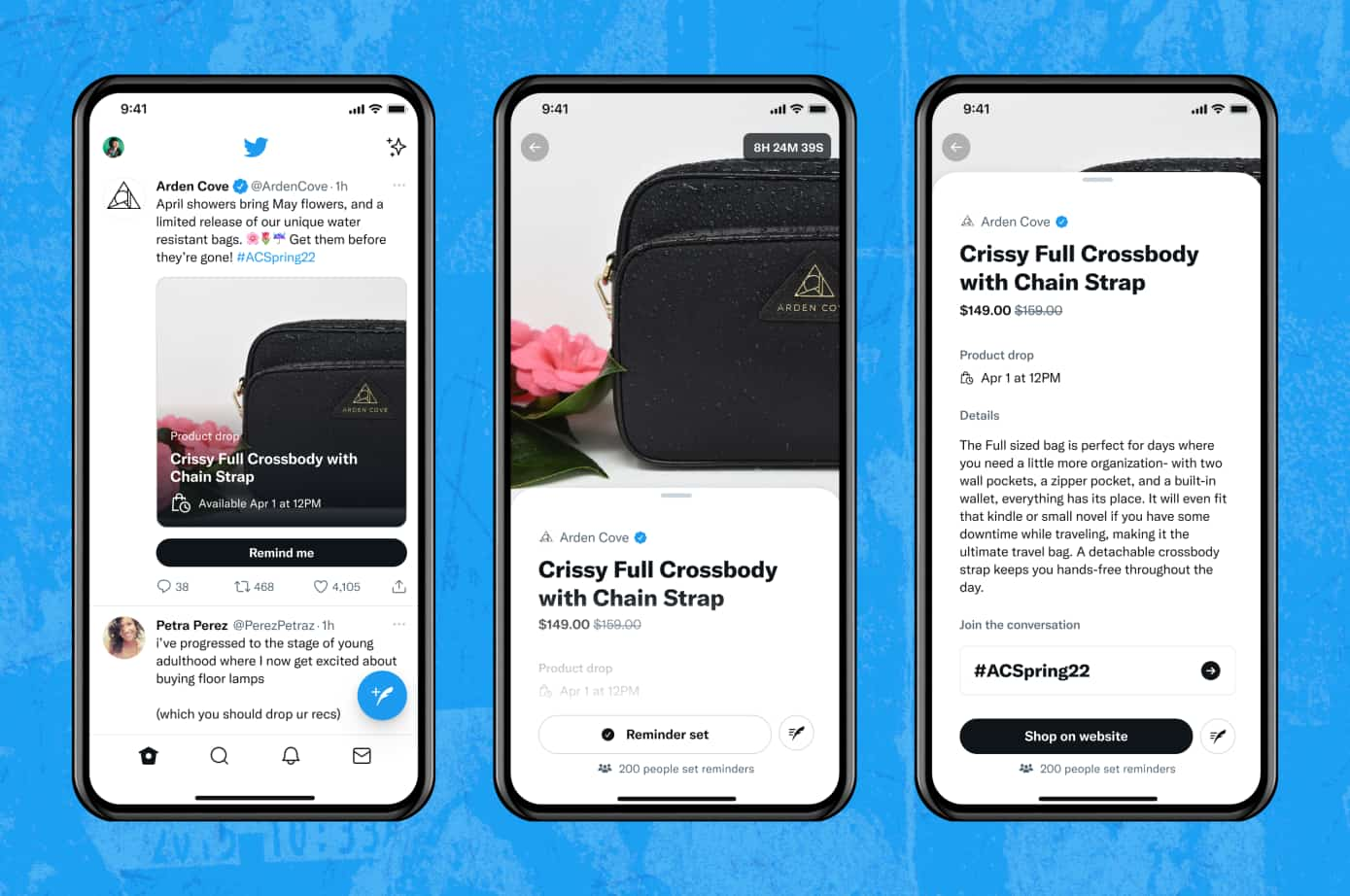Though Twitter continues to be embroiled in drama around its future ownership, it still seems to be focused on product development. Its latest feature allows merchants to tease upcoming releases. This aligns Twitter with the shoppability trend that continues to accelerate (more on that in a bit).
Known as Product Drops, the new feature lets merchants build anticipation for products they’ll be launching soon. The thinking is that Twitter is already a place where brand loyalists go to discuss excitement around upcoming products or to post multimedia to show off their gear.
Product Drops formalizes this activity and gives it somewhere to go. It also positions Twitter to get more credit in the eyes of merchants for whipping up excitement for new products. That can cement Twitter in the eyes of merchants as a customer acquisition channel – potentially leading to ad spend.
Purpose-Built
Going deeper on the new feature, it comes with a new purpose-built tweet format that lets merchants showcase a given product through text and images. This is much like standard tweets, with an additional field available to highlight release dates. Again, this was existing behavior… now formalized.
This will work particularly well for certain products that have scarcity or release anticipation. We’re talking limited production-run products like crafts (think: Etsy merchants), or vintage sneakers. Basically, it’s anything where the “product drop” nomenclature is traditionally used… hence Twitter’s feature title.
From the user/shopper perspective, clicking on one of these tweets brings them to a dedicated product page. That’s where they’ll find all of the standard product details. Merchants are also encouraged to display dedicated hashtags, so that fans can follow ongoing discussions around products.
In the same vein, a “remind me” button is available to users to get notified when the actual product drops. When that happens, the merchant-hosted web page for a given product is presented to the user, as opposed to the transaction happening under Twitter’s roof (which Instagram increasingly does).
All of the above is available free for merchants but, again, Twitter hopes it benefits downstream in terms of paid promotion. In fact, Twitter is quick to mention that Product Drop tweets can be promoted using all of Twitter’s standard ad tools. A segment of merchants will likely jump on that.
Shopping-Forward
Back to the shoppability trend noted above, it’s all about making everything shoppable. Particularly relevant for social feeds and high-intent product discovery channels like Pinterest, it involves adding more transactional functionality. This compresses the funnel from discovery to direct response.
To be fair, shoppability isn’t necessarily a new phenomenon. In fact, we’ve been tracking the rise of the “buy button” in social feeds for the past decade. However, there’s been a clear acceleration in the past two years, as the shoppability trend has piggybacked on Covid-induced eCommerce growth.
Back to Twitter, it’s been relatively quiet on this front, at least compared to shopping-forward players like Instagram. But activity is picking up, including the recent launch of mobile storefronts. And with a looming management shakeup that will seek out new monetization models, this could grow.
Meanwhile, Twitter is testing Product Drops with U.S. users in English for iOS devices. It’s also working with a handful of launch partners to get the ball rolling, including @Dior, @unionlosangeles, @HomeDepot and @Fossil x @JeffStaple. Wider rollouts will come at a later date, TBD.




